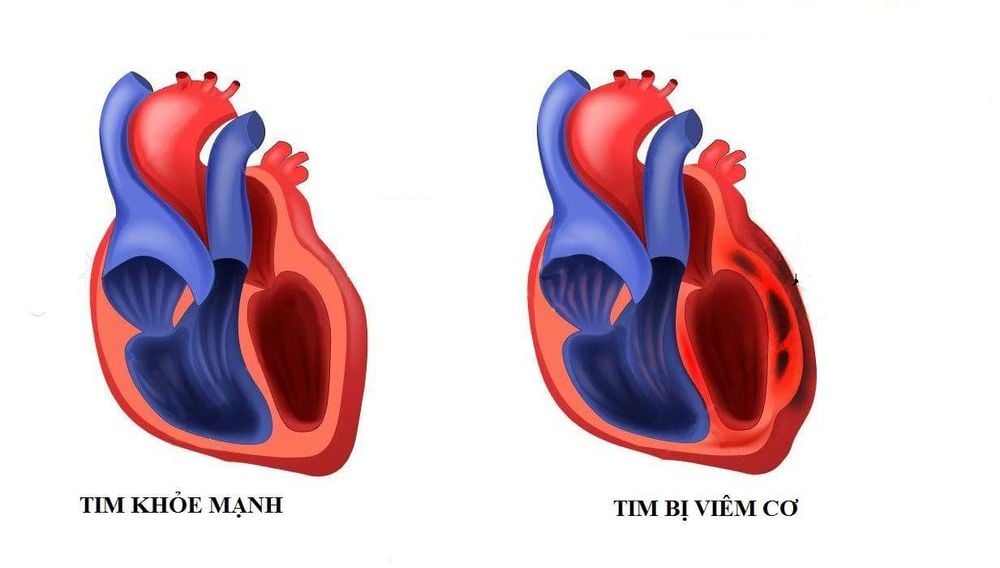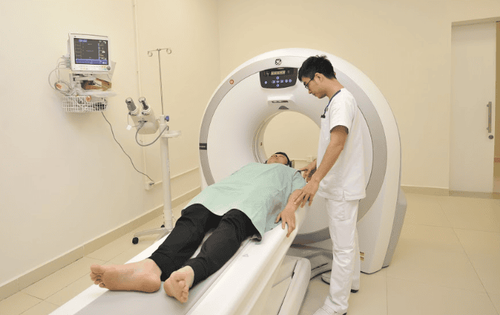This is an automatically translated article.
Today, cardiovascular diseases are increasingly common, including myocarditis. This is a disease that causes all or part of the heart muscle to become inflamed, as a result of another infection. To diagnose and detect abnormalities, the patient will be assigned to perform an electrocardiogram and chest X-ray.
1. What is myocarditis?
Myocarditis is an inflammatory condition of the heart muscle that is the result of some infection acquired by the patient.
Myocarditis can occur at any age, but the person most at risk is young people between 20 and 40 years old. Males are more affected than females.
People with weakened immune systems, including infants and young children.

Người trẻ từ 20 đến 40 tuổi có nguy cơ cao bị bệnh viêm cơ tim
2. Symptoms of myocarditis
Manifestations of myocarditis varied, ranging from mild to severe. Many patients have no symptoms, the disease progresses rapidly, causing heart failure. Symptoms of the disease are divided into 3 main groups:
No symptoms: The symptoms are not clear, even if there are no signs, the patient cannot detect changes in the body. .
Myocarditis progresses silently, until it manifests, it has become serious, possibly with myocardial hypertrophy.
Group with typical symptoms: There are many patients with myocarditis that show unusual and very typical changes in the body such as:
Onset as high fever Headache Headache Muscle fatigue Watery eyes , runny nose Digestive disturbances, diarrhea, poor appetite Chest tightness, shortness of breath Shortness of breath may worsen after 1-2 days of onset, accompanied by chest pain, palpitations chest and liver pain.
Group with severe symptoms: Patients present with cardiogenic shock, tachycardia, small pulse, low or unmeasured blood pressure, pale skin.
Symptoms of the disease are getting worse, patients do not respond to treatment and are at high risk of death.
3. Causes of myocarditis
Viral infections: There are many causes of myocarditis, of which the most common cause is a virus. Myocarditis can occur at the same time or immediately after a viral infection in the throat or in the lungs.
Viruses that can cause myocarditis include: seasonal flu, rubella, chickenpox, lymphadenitis, mumps, measles, dengue fever, rabies virus, polio, hepatitis A and B viruses.
Other causes. : Chagas disease, Lyme disease, macrocytic myocarditis, medication side effects, exposure to toxic chemicals, rejection after a heart transplant,...
Normally, the body's immune system has Many viruses can be ruled out, so many people with viral myocarditis go away on their own in a week or so.
4. Why is it necessary to do an electrocardiogram and chest x-ray to diagnose myocarditis?
In order to accurately detect and diagnose myocarditis, in addition to the clinical symptoms checked on the patient, the doctor will appoint other tests such as:
Electrocardiogram Electrocardiogram (ECG) Electrocardiogram (ECG) is a graph that records the changes in electrical currents inside the heart. The heart contracts with each beat and is controlled by the conduction system in the heart muscle.
The electrical currents of the heart are very small, only about a thousandth of a volt, but can be detected from electrodes placed on the patient's arms, legs and chest transmitted to the recorder. An electrocardiogram will amplify the signal and record it on an electrocardiogram.
X-ray – X-ray X-ray is a technique to capture the part to be examined with X-rays. In the x-ray, the doctor can see pictures of the internal organs of the body. If the patient has myocarditis, when taking an X-ray, the image will see the heart shadow larger than normal.
Echocardiography Magnetic resonance imaging Magnetic resonance imaging to assess the extent of the heart is affected.
Some people may need a myocardial biopsy. Myocardial biopsy is a technique in which a very small sample of heart muscle is taken from a patient to determine the cause of myocarditis
5. How is myocarditis treated?
To treat myocarditis depends on the cause and severity of the disease.
Patient needs bed rest and limited physical activity for the first 6 months. This will keep the heart muscle from working too hard. Indications to take pain relievers will help relieve chest pain and reduce fever.
Currently there is no specific treatment for viral infection. However, almost all cases of viral myocarditis resolve spontaneously within a week without the need for specific treatment.
Indications for drug use:
Medicines for heart failure, antiarrhythmic drugs
Use antibiotics if myocarditis is caused by bacteria
Take steroids if I have macrocytic myocarditis.
Quit alcohol if you have myocarditis due to the patient drinking a lot of alcohol.
Vinmec International General Hospital is one of the largest, prestigious, international standard quality hospitals. All new and modern machinery systems are imported synchronously from Europe to help diagnose the disease with the most accurate results. Along with that is a team of highly qualified and experienced medical doctors, when in need of an examination, you can call the hospital switchboard number for assistance in booking an early cardiovascular clinic appointment. best.
Please dial HOTLINE for more information or register for an appointment HERE. Download MyVinmec app to make appointments faster and to manage your bookings easily.













